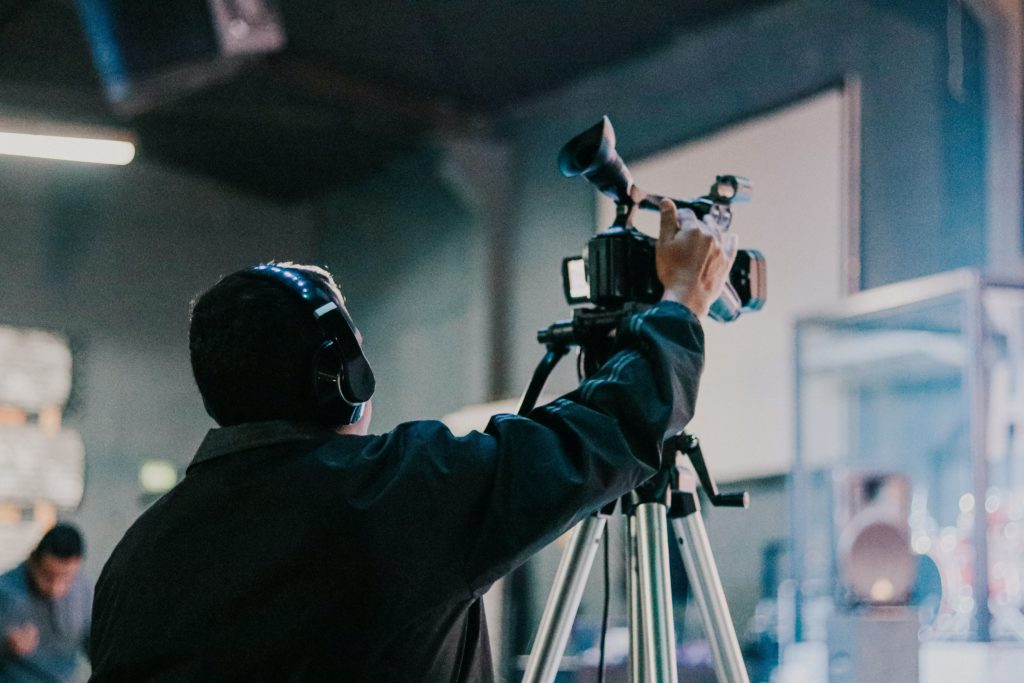If you’re someone who likes to use subtitles when watching films at home or who likes to go to the cinema and view the original, subtitled version, you’re benefitting from the advantages of audiovisual translation. But don’t be mistaken, it doesn’t just involve putting dialogues in another language and that’s it. It encompasses much more.
Basically, it consists of transferring audiovisual content from a source language to target language, so that it can be seen and heard through a screen. It has the same characteristics as any translation, but it also has the unique attribute of being directly related to the image that is being viewed.
In audiovisual translation, or AVT for short, there are two other important points to bear in mind.
- A limited number of characters can appear on the screen at one time. Sometimes there are people who speak very fast and it would be difficult to read the subtitles in time.
- Sayings and jokes have to be culturally adapted, so that they have the same effect on the target audience as the do in the original location.

What are the forms of audiovisual translation?
We’ve commented on the common aspects of this type of translation, but there are different forms depending on what we focus on.
Dubbing
Once the original production has been recorded, dubbing consists of substituting dialogues with others in the target language. This gives the product an incredible opportunity to be marketed internationally.
First the translation work is done, and then dubbing actor comes into play. However, it’s not that simple. You have to take into account all the idiomatic turns of phrase, appropriately translate the expressions or jokes and choose the right words to fit the voice-over time. The idea is that while you see the image you listen at the same speed as the character speaks and moves so that, as we’ve said, the image is linked to the text or sound. It is very important to synchronize the audio and video. This is the key.
Subtitling
It consists of the written version of an audiovisual production. The same as for any kind of translation, it’s important to know the cultures of both languages to be able to do it while maintaining meaning in terms of the expressions and turns of phrase.
It is especially difficult, as there’s a 12-word limit. Translators have the challenge of giving the words the same meaning and making this adapt to the length of the sentences so that, what is more, the text has an appropriate reading speed.
Subtitling is one of the most useful tools for people with hearing difficulties, as they can enjoy audiovisual products through reading.
Audio description
Audio description was created with the aim of making audiovisual products “visible” for people with some form of visual impairment. It not only consists of dubbing the target language, but also taking advantage of the moments where there is no dialogue in order to offer extra oral information, explaining all the scene’s important elements.
Video game localization
This is a branch of audiovisual translation that consists of adapting a video game to a language and cultural specificities of the target country. Translators have to be very specialized, because this not only deals with translation or dubbing, but also cultural aspects. What is more, everything related to video games is rapidly evolving, very changeable landscape, which is why continuous updates are needed.
Where to study audiovisual translation? Best master’s degrees
If you have studied Translation and Interpreting and you want to specialize or, simply, you master a couple of languages and you are interested in this discipline, you can complete a master’s and become a professional in it.
You have in-person and online options, as well as different prices depending on what best suits your possibilities.
At the European University of Madrid you can take this master’s degree in dubbing, translation and subtitling. With a duration of nine months and in-person, you’ll end up being a subject expert.
With the official master’s in audiovisual translation from the Autonomous University of Barcelona, you have the opportunity to study in the educational institution that pioneered this specialization in Spain. In its online form, you can study from any location.
The master’s in audiovisual translation from the Antonio Nebrija University of Madrid offers a double degree. As well as the university’s own degree, you receive a degree from Euroinnova Business School. With its online format, you can access this master’s wherever you are.
Audiovisual translation is not something new, it has been around for many years, but in recent times it has undoubtedly become a branch of translation worth thinking about. As you can see, it requires specialized translators like the ones you will find at blarlo.com, professionals capable of offering you the best results.






